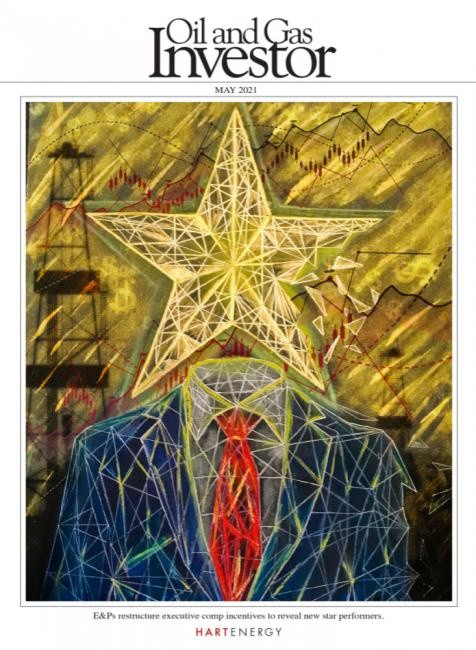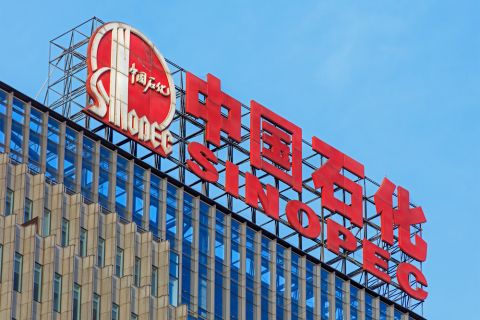
Recent well performance shows how the Haynesville Shale is actually outpacing some of the other dry gas regions and remain competitive in the markets, says Rystad Energy analyst Emily McClain. (Source: Hart Energy; Shutterstock.com)
Regardless of the myriad of factors clouding the industry’s future, the Haynesville shale basin is well-positioned for both the near- and long-term.
That was the early message from both analysts and operators at Hart Energy’s DUG Haynesville Conference and Exhibition in Shreveport, La., on May 27 citing the shale play’s economics plus growing global demand for natural gas and rapidly increasing takeaway capacity.
Emily McClain, North American gas markets analyst for Rystad Energy, explained that gross gas production for the Haynesville region will reach more than 12 Mmcf/d by the end of the year. McClain pointed to the favorable wellhead economics the Haynesville provides, with Tier 1 acreage breakeven prices at $2.21/MMbtu. Even Tier 3 and 4 acreage positions offer competitive wellhead prices at just above $2.50/MMbtu, she said.
“This well performance has really added to the potential of the region and really shows how the wells are actually outpacing some of the other dry gas regions and remain competitive in the markets,” she said.
And although natural gas prices held steady despite last year’s global commodity price wars and demand destruction, there is likely to be a ceiling on how high Henry Hub prices may climb in part because of high gas-oil ratios (GOR) in oil heavy plays like the Permian Basin, said David Braziel, CEO of RBN Energy.
In 2017, GOR in the Lower 48 was 9.4 cubic feet of gas per barrel of oil. In March 2020, that GOR fell slightly to 8.6. But in May 2020, the GOR climbed up to 10.1, with RBN Energy expecting the ratio to hold at about 9.7 through the end of the year.
“When producers pulled out rigs, they stopped drilling new wells, the average age of the wells producing in those basins got older,” Braziel said. “Interesting thing about shale wells: the older they get, the gassier they get. So as the fleet of wells gets older, the average amount of gas produced in those basins goes up. The stability of natural gas production puts a ceiling on gas prices.”
Read more about the Haynesville in the May issue of Oil and Gas Investor

One producer that has recently capitalized on the Haynesville’s favorable economics and natural gas’ production stability is Plano, Texas-based Vine Energy. Earlier this year, Vine consolidated ownership from three entities—Vine, Brix and Harvest—and in March netted $324 million in its initial stock offering.
Vine Energy holds 227,000 acres in Northwest Louisiana where it develops out of the stacked pay zones of the Haynesville and Mid-Bossier shale plays. The company is running four drilling rigs and holds more than 870 drillable locations with more than 80% of its assets yet to be developed.
Speaking during the opening keynote at DUG Haynesville, CEO Eric Marsh said his group held more than 160 meetings with investors from around the country prior to the IPO listing, and got a strong sense of what those investors are seeking in a company.
“What the investment community wants from us is a low-leverage company,” Marsh said. “They think 2 is a beginning point. You can’t get an RBL (reserve-based loan) unless you’re sub-2 today. So, 2 net-debt to EBITDA is the place where everything starts. And then they want you to have a line of sight to be better than that.”
And as practically every public company has learned, investors are demanding cash flow, he said.
“With every asset you own, including ours, you have an evolution of that asset,” Marsh said. “You evolve as time goes on.”
“Not everybody can buy an asset that immediately generates levered-free cash flow,” he continued. “But the market really says ‘I don’t care—what I want is a company that will generate meaningful levered-free cash flow.’ And the second part of that is ‘I want some of those returns back in the form of a dividend.’”
Similar to demands by investors of cash flow generation is little to no production growth, he added.
“The other thing I would tell you that we heard virtually every meeting is they don’t want production growth,” Marsh said. “They want levered-free cash flow growth. And what they want us to do is drill cheaper and to operate cheaper. And to reduce our G&A and to make more margin in every Mcf per day we produce.”
“So, at the end of the day,” he continued, “the market has said no production growth. They want you to be flat.”
Recommended Reading
TPH: Lower 48 to Shed Rigs Through 3Q Before Gas Plays Rebound
2024-03-13 - TPH&Co. analysis shows the Permian Basin will lose rigs near term, but as activity in gassy plays ticks up later this year, the Permian may be headed towards muted activity into 2025.
For Sale, Again: Oily Northern Midland’s HighPeak Energy
2024-03-08 - The E&P is looking to hitch a ride on heated, renewed Permian Basin M&A.
CEO: Continental Adds Midland Basin Acreage, Explores Woodford, Barnett
2024-04-11 - Continental Resources is adding leases in Midland and Ector counties, Texas, as the private E&P hunts for drilling locations to explore. Continental is also testing deeper Barnett and Woodford intervals across its Permian footprint, CEO Doug Lawler said in an exclusive interview.
Chevron Hunts Upside for Oil Recovery, D&C Savings with Permian Pilots
2024-02-06 - New techniques and technologies being piloted by Chevron in the Permian Basin are improving drilling and completed cycle times. Executives at the California-based major hope to eventually improve overall resource recovery from its shale portfolio.
Sinopec Brings West Sichuan Gas Field Onstream
2024-03-14 - The 100 Bcm sour gas onshore field, West Sichuan Gas Field, is expected to produce 2 Bcm per year.





